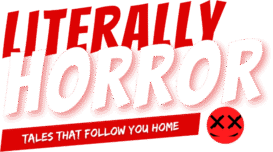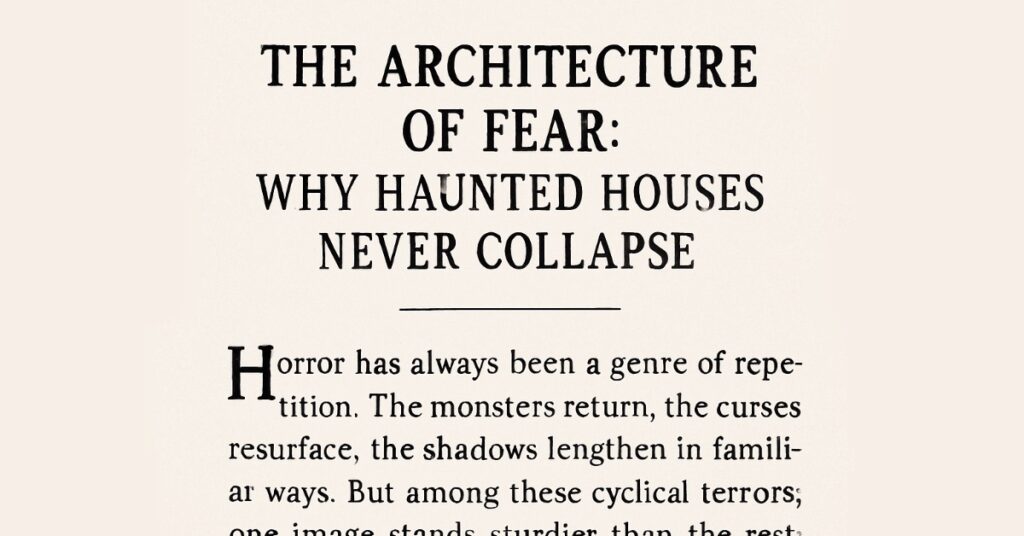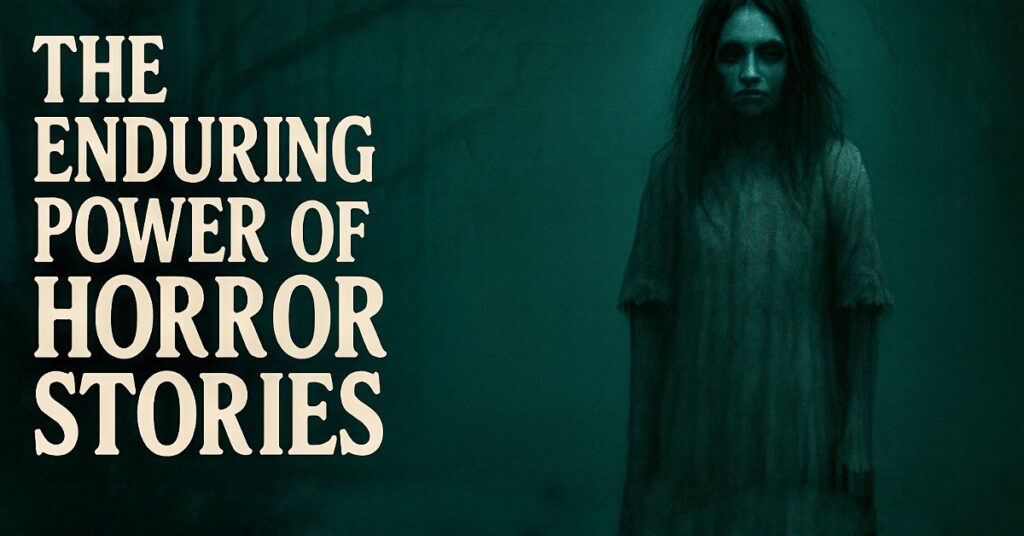Horror, more than any other genre, thrives on return. The monster comes back after being slain, the curse revives after being broken, and the shadows stretch once more across the familiar hallway. Its stories are cyclical, repeating themselves with new faces but ancient fears. Among these repetitions, one figure looms larger than all others, its silhouette unchanging, its foundations unshaken: the haunted house.
From the medieval castle of Gothic romance to the suburban home of twenty-first century cinema, the haunted house endures because it is not merely a backdrop—it is the architecture of fear itself. Monsters, ghosts, and killers can be reinvented, but the house remains. It waits. It receives. And in its permanence lies its power.
The House as Archetype
Human beings are creatures of shelter. We spend more time inside walls than under open skies. Homes are not just physical containers but psychological ones, holding our memories, our inheritances, and our secrets. Every floorboard, every stairwell, every door remembers. To enter a house—especially one abandoned or estranged—is to step into the residue of other lives, to feel the weight of histories that press invisibly against the present.
This is why haunted houses do not collapse. They are not structures alone but archetypes, born of a universal truth: the spaces that should comfort us can also betray us. The nursery becomes a place of cries in the night. The kitchen becomes a place where objects fall without cause. The bedroom becomes a place where sleep is impossible. What terrifies us most is not the unfamiliar ruin but the familiar room turned strange.
Gothic Foundations
The haunted house was first built in the literature of the Gothic, those sprawling castles of Walpole and Radcliffe where stairwells wound endlessly into darkness and corridors promised both romance and ruin. These castles were metaphors as much as settings—symbols of the decayed aristocracy, of the burden of history, of secrets buried under stone. They introduced the architectural imagination of fear: the notion that buildings themselves could harbor malignancy.
But Gothic castles did not remain locked in the eighteenth century. They traveled. By the time we reach Poe, the castle has shrunk into the manor house, a family residence rotting from the inside, “the House of Usher” collapsing under the weight of its own doom. By the time we reach Shirley Jackson, the haunted house has moved to America, where Hill House stands alone against the hills, a place “born bad.” And by the time we reach Stephen King, the house has fragmented into hotels, apartments, and suburban neighborhoods—all equally capable of holding ghosts.
The House as Memory Palace
The haunted house is, above all else, a memory palace of dread. Its corridors are our corridors. Its locked rooms are our locked memories. Its cellars are our subconscious. To enter a haunted house is to walk through an allegory of the human mind, where every forgotten object is charged with unease.
This is why we cannot simply “burn it down” in narrative terms. Destroy the house and you destroy the story’s central metaphor. A haunted house never collapses because it represents memory itself—resilient, recurrent, impossible to demolish. Even when reduced to rubble, it lives on in retelling. Every storyteller rebuilds it. Every generation refurbishes it.
Haunted Houses and Domestic Anxiety
As society changed, so too did the blueprint of the haunted house. In the nineteenth century, it symbolized the decay of nobility. In the twentieth, it began to reflect anxieties about domestic life itself.
The suburban haunted house is perhaps the most chilling form, precisely because it disguises itself as ordinary. It is the American dream curdling from within: white fences, neat lawns, split-level designs—all rotted by whispers behind drywall. In Poltergeist, the home built atop a burial ground becomes a suburban nightmare. In The Amityville Horror, the cheerful colonial house becomes a site of demonic infestation. These stories remind us that our safest spaces are also the ones that most easily trap us.
Even modern technology has not dispelled the archetype. Digital homes—online spaces where we “live” through screens—echo the haunted house structure. They are full of echoes, invisible presences, and the uncanny sensation of being watched. The haunted house adapts seamlessly into the architecture of the virtual age.
Permanence of Ruin
Unlike other horror motifs, the haunted house does not rely on shock or novelty. Slashers grow stale, monsters lose their menace, but the house continues to frighten because it embodies permanence. It is patient. It waits. Its horror is not that it leaps at us but that it endures us, shelters us, contains us.
The haunted house is horror’s most immovable symbol because it is also its most ordinary. Everyone knows the sensation of a house at night—the creak of timbers, the sigh of heating pipes, the silence between walls. The ordinary sounds of habitation are indistinguishable from the whispers of ghosts. In this way, the haunted house never requires embellishment. The architecture does the work itself.
Why Haunted Houses Never Collapse
To collapse the haunted house would be to collapse horror itself. We can repaint its walls, change its address, or furnish it with new technologies, but its essence remains: windows that stare back, doors that will not stay shut, roofs sagging with the weight of history.
The haunted house is not a ruin we rebuild—it is a ruin that rebuilds itself. Every story of horror finds a way back to it, consciously or not. Because at the end of every night, every road, every dream, we return to a house. And inside that house, there is always another room waiting to be opened.
The haunted house endures not because it is indestructible in wood or stone, but because it is indestructible in imagination. It is a place where personal fear meets cultural memory, where architecture itself becomes metaphor, where permanence and decay coexist.
We cannot leave it behind because it is where horror lives best—not in the monster’s face or the knife’s edge, but in the echo of footsteps down the hallway of a house we thought we knew. Haunted houses never collapse because they are not just buildings—they are the eternal architecture of fear.




